Understanding Item Builds
Sando
August 18, 2015
Introduction
For many new, and even experienced players, item builds can be difficult or are greatly misunderstood. There are so many different ways of doing it, and situations can crop up where "wrong" choices actually become desirable.
Players naturally think that item builds are only really about cores - and while it's extra important for them, the limited amount of gold available to supports can make their choices vital too.
In this guide, we'll be examining why particular choices tend to make sense on specific heroes, and also at when and why you might pickup certain situational items.
Core and Essential Items
Everyone has a slightly different intepretation of what these terms actually mean. Do you have to buy them every game? Is your core just a few items, or does it include a lot of what other people might consider "luxuries"?
For me, "core" items are the ones you generally try to build as soon as possible, and are in some way "essential" for you to play the hero as they are intended. Notice I use the word "intended" not "optimally".
A lot of people get confused by this - "I need a  Blink Dagger,
Blink Dagger,  Force Staff,
Force Staff,  Scythe of Vyse,
Scythe of Vyse,  Aghanim's Scepter,
Aghanim's Scepter,  Refresher Orb and
Refresher Orb and  Boots of Travel to play
Boots of Travel to play  Rubick as intended."
Rubick as intended."
Nope - you'd need an item build something like that to play "optimally" - i.e. to fully exploit that hero's potential.
The first thing you should notice here is that getting your hero to an "optimum" setup is VERY difficult. You need a lot of gold and level 25. Many games will be over before even one hero gets to an "optimal" state.
The second thing to note is that getting your hero to an "optimal" state is NOT always desirable. Huh? Have you gone mad Sando? Why wouldn't I want to do that?
1) There is a limited amount of gold and experience available to each team in each match. For one hero to gain more, generally another has to give some of it up. Which hero(es) on your team will make best use of it? Who can do without?
2) Getting yourself to an optimal state also gives the opposition more time to do the same. If they're going to be at an advantage in that kind of late game matchup, you want to end the game sooner.
Hopefully that's cleared up that particular argument, we can get on with talking about "essential" items. There are very few absolutely essential items in the game, but here's a few we can talk about...

Examples
1)
 Boots of Travel
Boots of Travel on
 Tinker
Tinker. I'd quite happily argue that these are absolutely essential to his playstyle - he's simply not half the hero without the ability to teleport across the map regularly.
2)
 Blink Dagger
Blink Dagger on extremely position dependent team fight heroes. If your hero has a big ultimate that is centered on their own position, and no transport abilities, it's usually essential for them to pick one up - or again, their playstyle is heavily constricted.
E.g.
 Magnus
Magnus,
 Tidehunter
Tidehunter,
 Sand King
Sand King, Earth Shaker,
 Enigma
Enigma.
It can occasionally be possible for other heroes to help them meet their needs without it - e.g. if they have a
 Tiny
Tiny who can
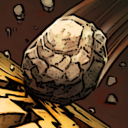 Toss
Toss them into position, or a setup ability like
 Moonlight Shadow
Moonlight Shadow or
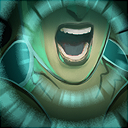 Song of the Siren
Song of the Siren - but this is difficult and requires more teamwork.
3)
 Boots of Speed
Boots of Speed on just about anybody. Movement speed is just so important that there's not really any hero who can do without them in the long run.
The Basics - fixing problems
The other part of "core" items is generally concerned with fixing particular issues with your hero. For example if they have important abilities and a small mana pool, or need to be able to fight early, but have low survivability. The example of mobility we covered somewhat above.
The first thing to consider here is what the rest of your team can potentially do to help you out here. You may be quite mana dependent to lane effectively...but if you have a  Keeper of the Light with you, the issue becomes markedly less important.
Keeper of the Light with you, the issue becomes markedly less important.
Maybe you're a  Lifestealer worrying about being kited...if you have a
Lifestealer worrying about being kited...if you have a  Storm Spirit you can lurk inside for a free ride into the action, it's not such a big deal.
Storm Spirit you can lurk inside for a free ride into the action, it's not such a big deal.
Lets have a look at some common examples, and assume your team can't help you out here:
Sustain
There's two parts to this - health, and mana. Basically you don't want to have to be heading back to the fountain every few minutes to restore yourself (especially in a farming role), so finding a way of "sustaining" is somewhat important to all heroes.
Different heroes also have quite different needs and priorities here - many carries without big expensive abilities can live quite happily without mana regeneration, or can get by with what their team can give them via
 Arcane Boots
Arcane Boots.
Many caster type heroes are basically useless without their abilities, so need to have mana regeneration in order to function correctly.
A few other heroes are much less effected as they have abilities that allow them to sustain easily.
Lifesteal
Quite a common option for heroes with high physical damage output. They can sustain their health through damaging other units, be it jungling or fighting the opposition. There are two key things you need to be able to lifesteal effectively:
1) You need enough damage output to bring in enough health to sustain yourself. It's pretty pathetic watching someone try to jungle too soon with a
 Morbid Mask
Morbid Mask.
2) You need to be able to attack. If you're being locked down or kited, you can't bring in the health you need to survive.

Case Study
 Ursa
Ursa. An interesting hero with an unusual set of problems and strengths.
 Ursa
Ursa has excellent damage output from very early on thanks to
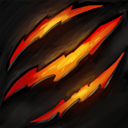 Fury Swipes
Fury Swipes. He's naturally very tanky for an agility hero, and can max his attack speed with
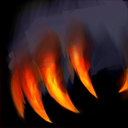 Overpower
Overpower.
This means that he can tick off point 1 very quickly. Point 2 however is more tricky - as a melee hero with no lockdown,
 Ursa
Ursa can have issues reaching enemies, and is very vulnerable to slows and stuns. This naturally leads us on to two further items after our lifesteal -
 Blink Dagger
Blink Dagger for mobility, and
 Black King Bar
Black King Bar to stop you being locked down.
This is a good example of "fixing problems" with a hero.
Regeneration
A different way of approaching sustain is to look at bringing in enough general regeneration or buying items that restore health and/or mana. The most basic example is something like a
 Bottle
Bottle. We can use it to rapidly restore some of both pools.
For mana specific items we could look at examples like
 Soul Ring
Soul Ring or
 Arcane Boots
Arcane Boots - both have their own issues.
 Soul Ring
Soul Ring comes with an associated health cost that needs to be addressed (e.g. through a
 Bottle
Bottle, or abilities like Dragon's Blood or
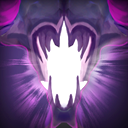 Brain Sap
Brain Sap).
 Arcane Boots
Arcane Boots are not suitable for many carries due to the lack of damage output.
The other method is to stack up "base" regeneration - i.e. the ongoing per second recovery derived from your base stats and items. Strength increases your health regen, and intelligence your mana. So simply levelling up and buying stats items can help here. The other options include items like
 Bloodstone
Bloodstone or
 Battle Fury
Battle Fury which give you a guaranteed regen income.

Case Study
 Anti-Mage
Anti-Mage. The most common build on him remains an early
 Battle Fury
Battle Fury. Why would we pick this over another farming item like
 Radiance
Radiance,
 Hand of Midas
Hand of Midas or
 Maelstrom
Maelstrom? The general thread of the choice runs something like this.
 Anti-Mage
Anti-Mage requires both gold and levels to be effective as he lacks the team fight presence of a hero like
 Faceless Void
Faceless Void. He lacks sustain and damage early on - although he has great mobility thanks to
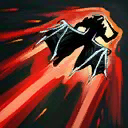 Blink
Blink.
So, it makes sense for
 Anti-Mage
Anti-Mage to farm heavily before becoming too involved in the game; he needs damage to be able to farm quickly, health sustain to keep him out of the fountain, and some mana sustain to allow him to keep using
 Blink
Blink. As he gets stronger, his agility gain will mean he has the attack speed he needs, so will generally want raw damage to add to his attack.
Hopefully that
 Battle Fury
Battle Fury pickup is looking more and more attractive compared to the alternatives which don't offer any sustain.
Abilities
Sustain abilities generally tend to point towards a hero being a support (why pay for something when you can get it "for free"?), but this isn't always the case with the likes of
 Lifestealer
Lifestealer,
 Wraith King
Wraith King and
 Legion Commander
Legion Commander already coming with sustain abilities - although you'll notice these are almost all lifesteal of some kind.
However, most examples are supports. Mana regeneration tends to be the key here with abilities like
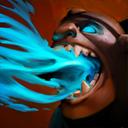 Mana Drain
Mana Drain,
 Chakra Magic
Chakra Magic, Sacrifice and
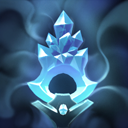 Arcane Aura
Arcane Aura. Supports with mana sustain are supports who don't need to buy as much equipment, and this also tends to come with a double whammy.
Most supports NEED mana for their abilities, and without natural regen they have to be either very careful or have more levels/equipment. If your
 Skywrath Mage
Skywrath Mage doesn't have enough mana to cast his ultimate, he's much less useful to have around.
By having a mana sustaining ability, it means you can easily pickup
 Tranquil Boots
Tranquil Boots, so both your health and mana sustain are "fixed" very quickly and cheaply. Value for money is essential when building supports.

Case Study
 Lich
Lich. You almost always pickup Sacrifice on
 Lich
Lich very early in the game, as it's great for both lane control, and denying gold/xp to the opposition. A side effect of this is that you'll be getting a lot of extra mana "for free", and can continue to get "free" mana easily as long as friendly creeps are available nearby.
This basically allows you not to worry about mana regeneration very much - gaining levels and any intelligence equipment will automatically increase your pool size, and Sacrifice will let you keep it topped up. By buying
 Tranquil Boots
Tranquil Boots you can health sustain too, and as a ranged caster hero you're rarely taking lots of hits. They also give you more speed for moving between lanes, and extra armour - nice.
The money saved here can be invested straight back into useful items -
 Observer Ward
Observer Wards or potentially even a
 Mekansm
Mekansm,
 Veil of Discord
Veil of Discord etc.
Transport
This only relates to a small category of heroes with global mobility -
 Tinker
Tinker, and
 Nature's Prophet
Nature's Prophet. Thanks to their respective abilities/items, these heroes are never really more than a short time away from the fountain. They can regularly pop back for a top up, so simply don't need much in the way of base regeneration at all.

Case Study
 Tinker
Tinker. Thanks to
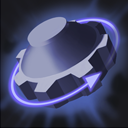 Rearm
Rearm,
 Tinker
Tinker can use his
 Boots of Travel
Boots of Travel frequently to get around the map. He can empty his mana pool, and head back for a rapid refill before doing it again.
To balance this,
 Tinker
Tinker has expensive abilities and a reasonably limited pool - he'd really struggle to get by without additional equipment, and it would badly limit his impact. However, being able to cast a few more times before heading back to the fountain, and having some "emergency" mana on standby is important - otherwise he could easily be "stranded" and have to walk home.
Again, this tends to inform our early item choices with him. A
 Bottle
Bottle, a
 Soul Ring
Soul Ring, and
 Boots of Travel
Boots of Travel. The first two items are the most cost efficient way of increasing the amount of time we can spend in the field before heading back. We
 Rearm
Rearm the
 Soul Ring
Soul Ring so can use it as often as we can afford the health cost - while the
 Bottle
Bottle charges offset the impact of that health loss. They can also be used to effect a more rapid turnaround in the fountain.
Getting By
A much underrated skillset! This is of primary importance to support heroes who can't always afford to solve their issues early on. Many players also overrate their own needs when in this role, and begin confusing their "essentials" with their "desirables".
The best way I can explain this is through an example:

Case Study
 Jakiro
Jakiro. A big tanky dragon, he's generally played as a support, but has also seen some action as a core hero for some pro-teams. He has excellent strength and intelligence, a relatively cheap stun, a mana-free orb attack, and a couple of reasonably expensive AoE nukes.
 Jakiro
Jakiro's problems in a support role are his poor movement speed, the unreliability of his stun, and that he has some positioning requirements to be most effective. Generally his large mana pool and free AOE-orb attack
 Liquid Fire
Liquid Fire mean that he can do a substantial part of his work of counter-pushing and harassing with no additional equipment or levels.
For fights or ganks that break out, he'll probably need to bring his big nukes out and spend some serious mana, but his large pool allows for multiple casts of both. He's tanky enough to soak up quite a lot of damage along the way.
For me, his only "essential" equipment is a pair of
 Boots of Speed
Boots of Speed to help him address his positioning - he can operate in the field effectively with just
 Liquid Fire
Liquid Fire, and drop back to the fountain if absolutely necessary because he's low on health or mana. Is it ideal? No. But he can operate at 70-80% effectiveness like this, compared to others who might be down to 20-30% in a similar role. (How much use would a hard support
 Anti-Mage
Anti-Mage be?)
Yes, a
 Force Staff
Force Staff or
 Blink Dagger
Blink Dagger or
 Eul's Scepter of Divinity
Eul's Scepter of Divinity,
 Veil of Discord
Veil of Discord,
 Mekansm
Mekansm or
 Arcane Boots
Arcane Boots will all help him, make him more optimal. But you have to decide what's most important for your team - would you rather have a Eul's on
 Jakiro
Jakiro, or a
 Blink Dagger
Blink Dagger on
 Earthshaker
Earthshaker?
Item Efficiency
Items can be described as having three different kinds of efficiency. Gold, Slot and hero. Lets look at each in turn:
Gold Efficiency is simply what you get for your money. Stats items are the best example of this:
An  Iron Branch gives you 3 stat points for 50 gold, or 50/3 = 16.66 gold per stat.
Iron Branch gives you 3 stat points for 50 gold, or 50/3 = 16.66 gold per stat.
 Gauntlets of Strength gives you 3 stat points for 150 gold, or 150/3 = 50 gold per stat.
Gauntlets of Strength gives you 3 stat points for 150 gold, or 150/3 = 50 gold per stat.
A  Belt of Strength gives you 6 stat points for 450 gold, or 450/6 = 75 gold per stat.
Belt of Strength gives you 6 stat points for 450 gold, or 450/6 = 75 gold per stat.
An  Ogre Club 10/1000 = 100g per stat.
Ogre Club 10/1000 = 100g per stat.
As you can see, more powerful items cost substantially more, per stat. Obviously this isn't the only measure that matters - often you need to buy specific items to make other ones. As you only get half the gold back when selling items, this needs to be factored in too.
Slot Efficiency is the balancer for the above. You can't hold 10  Iron Branches in your inventory, so the more expensive items begin to make more sense, as they allow you to hold more in total.
Iron Branches in your inventory, so the more expensive items begin to make more sense, as they allow you to hold more in total.
These two forces should inform your choices throughout the game. Early on when you have a very low net worth and total stats, a cheap  Iron Branch is fantastic. Late on, it's a waste of a precious item slot.
Iron Branch is fantastic. Late on, it's a waste of a precious item slot.
One of the key points here is how much farm you expect to get - do you really want to try to rush a  Scythe of Vyse on your intelligence support? It's a great item, but if you never get enough gold together to buy a component, it's not going to help you much. You could get an
Scythe of Vyse on your intelligence support? It's a great item, but if you never get enough gold together to buy a component, it's not going to help you much. You could get an  Urn of Shadows and a
Urn of Shadows and a  Medallion of Courage for less money than just the
Medallion of Courage for less money than just the  Ultimate Orb.
Ultimate Orb.
Hero efficiency is our final factor. The best way I can think of for describing this is that different amounts of gold are worth more or less depending which hero you put them on. 20K of net worth on a  Faceless Void is much more effective than 20k of net worth on
Faceless Void is much more effective than 20k of net worth on  Keeper of the Light - due to how the hero works and their scaling.
Keeper of the Light - due to how the hero works and their scaling.
The other part of this is how particular items work on specific heroes - an  Ethereal Blade on
Ethereal Blade on  Alchemist inflicts low damage thanks to his poor stat gain, and making an enemy physically immune is terrible when you have no magic damage.
Alchemist inflicts low damage thanks to his poor stat gain, and making an enemy physically immune is terrible when you have no magic damage.
Likewise, you generally don't want to see a  Butterfly or
Butterfly or  Daedalus on a
Daedalus on a  Phantom Assassin - they just do a lot less when you have skills like
Phantom Assassin - they just do a lot less when you have skills like 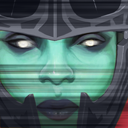 Blur and
Blur and 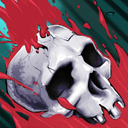 Coup de Grace.
Coup de Grace.
Farming Speed
These items are truly for cores only - there are simply more efficient options if you just need damage or stats.
In fact, the first point I want to make is that you don't necessarily need to build specialised farming items in all cases - any item which gives you sustain, damage or increased mobility can help you farm creeps faster, and may give you additional benefits.
True farming items should only be picked up with very specific heroes and situations in mind, at least some of these conditions must apply:
1) You think the game will go long enough for you to recoup the investment you make in them.
2) By taking the game later, you will have an advantage over the enemy team.
3) You don't already have skills that will help you farm quickly without them.
4) You are unable to be effective against the oppostion without additional gold and experience.
Lets look at an example of condition 1). The  Hand of Midas is a a good fit for this decision - it's roughly the same price as a
Hand of Midas is a a good fit for this decision - it's roughly the same price as a  Drum of Endurance, but offers considerably less in a direct comparison. The drum actively boosts your health, mana and damage, while also providing a movement and attack speed aura.
Drum of Endurance, but offers considerably less in a direct comparison. The drum actively boosts your health, mana and damage, while also providing a movement and attack speed aura.
However, the Midas will start to accrue a gold profit for you after approx 17 minutes of use, and can also help you gain experience faster. It has some utility against enemy minions.
The usual window for a Midas pickup is under 7 minutes - if we add in our 17 minutes til profit, take a bit away for the XP gain, that's roughly 20 minutes into the game before you break even on it. If the game is relatively uneventful and lasts well past this, you make a tidy sum.
If the game is chaotic and aggressive early on, that payback could be far too late - your team might already be in trouble and down on kills and towers. If you'd have got that  Drum of Endurance instead, it may just have made the difference in some of those decisive early fights and ganks.
Drum of Endurance instead, it may just have made the difference in some of those decisive early fights and ganks.
Quick info on farming items we haven't discussed yet:

Helm of the Dominator
The primary usage of this item is not the lifesteal (although that helps) but the ability to dominate a creep and use it to stack camps (including ancients) for you.
While good support players can and should be routinely stacking camps, they have other responsibilities and cannot always be available to do this. Even then, they can only realistically be doing one at a time unless they have special abilities and/or strong micro.
There's three main things to consider here:
i) That your hero has a way of quickly farming stacks. If you have to beat them up individually, it can be difficult and time consuming to take ancients. Items like
 Battle Fury
Battle Fury or abilities like
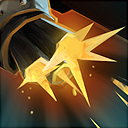 Flak Cannon
Flak Cannon,
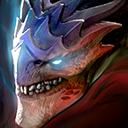 Elder Dragon Form
Elder Dragon Form,
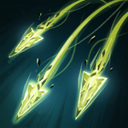 Split Shot
Split Shot or
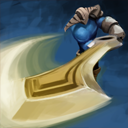 Great Cleave
Great Cleave can get the job done.
ii) That lifesteal is useful on your hero.
iii) That your team can maintain map control for long enough for you to farm them. Big stacks are a great source of farm for the opposition too.

Radiance
A huge radius of burn damage that doesn't even require you to attack or do anything except walk through the area you want to farm. It's good on two kinds of hero - ones with great survivability skills, and illusions. It's a strong team fight aura, especially against
 Blink Dagger
Blink Daggers.
The most common use of
 Radiance
Radiance is on illusion heroes like
 Naga Siren
Naga Siren and
 Phantom Lancer
Phantom Lancer, who can then use the burn aura to farm/push/etc without even being present. As you can imagine, this can become incredibly effective as you can farm multiple lanes and the jungle, potentially at the same time.
It's also picked up sometimes by tanky heroes like
 Spectre
Spectre and for use on
 Lone Druid
Lone Druid's bear.
It has two major issues - first of all, you need to try to buy it early to maximise the value for both farming and fighting. The scaling is quite limited. The other is that it's extremely expensive, and the buildup requires you to buy an extremely expensive 3800 gold item early on.

Maelstrom
One of the cheaper farming items, which also has some utility in fights due to the bursts of extra magic damage. This gives it more balance than some of the alternatives, but it tends to be slower in terms of pure farming speed on many heroes.
 Maelstrom
Maelstrom also offers nothing but damage and attack speed, so you have to bring your own sustain to the party, or focus more on pushing/farming lanes.
 Maelstrom
Maelstrom offers a static amount of damage, so it's really important to have sufficient attack speed to get a reliable amount of procs. Abilities like
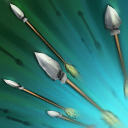 Focus Fire
Focus Fire fit really well with it.
Protection

Armour
Armour tends to come into it's own in the late game, but can also be a vital resource against teams which rely heavily on physical damage.
Because armour is % based, it scales extremely well, but tends to be a bit lacklustre earlier in the game. Any hero with good agility growth will naturally gain a lot of armour as they level up, as do heroes with abilities like Dragon's Blood. Other heroes may need to consider buying extra armour to compensate, especially if they're in a tank or carry role.
Examples:
 Medallion of Courage
Medallion of Courage,
 Mekansm
Mekansm,
 Assault Cuirass
Assault Cuirass,
 Shiva's Guard
Shiva's Guard

Case Study
 Huskar
Huskar. An interesting hero with some very specific strengths and weaknesses. As a strength hero with a strong heal in Inner Vitality, he's naturally quite tanky and can soak up massive amounts of magic damage thanks to
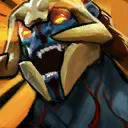 Berserker's Blood
Berserker's Blood, which also grants him lots of attack speed.
However, he has quite low agility growth - and while this doesn't effect his DPS greatly thanks to that attack speed boost, it does leave him with low armour and makes him a very obvious target for physical damage. Stacking on extra armour is an easy choice here against most teams.
The final item to note here is the
 Ghost Scepter
Ghost Scepter - while it increases magic damage against you, and leaves you unable to attack, it's also incredibly effective at stopping physical attacks against you.

Magic / Resistance
Magic damage tends to be most potent early in the game, but abilities like Stuns, Slows and Silences can have impact well into the late game.
There aren't actually that many items that deal directly with countering magic, so we can have a look at them in more detail:
 Cloak
Cloak - the most basic item, but still potentially a useful one. It increases your magic resistance, meaning you take % less damage.
 Glimmer Cape
Glimmer Cape - the new darling of the support player. It offers additional magic resistance in additional to a brief period of extra resistance and invisibility for you and an ally. Extremely strong at present.
 Hood of Defiance
Hood of Defiance - built on the
 Cloak
Cloak, it offers additional magic resistance and health regeneration. Especially popular on heroes who "self damage" with their abilities, as it reduces this too.
 Pipe of Insight
Pipe of Insight - build on the Hood, this then becomes a useful team utility item, and also offers a flat 400 damage block for yourself when activated. Extremely useful on tanky heroes who benefit from the health regeneration and self-damage - e.g.
 Pudge
Pudge and
 Centaur Warrunner
Centaur Warrunner .
 Linken's Sphere
Linken's Sphere - this is a high cost item with stats attached, so only ever tends to be built on core heroes, even though the active ability can be shared. It's most popular on "hit and run" type heroes like
 Queen of Pain
Queen of Pain, or
 Weaver
Weaver.
The sphere has two distinct advantages - 1) there is no limit on the number of times it can activate, or accumulated usage. 2) It can block any specifically targeted spell, even ones which pierce immunity like
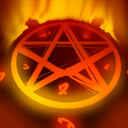 Doom
Doom or
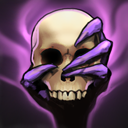 Fiend's Grip
Fiend's Grip.
This second point is the key reason you might pickup a Linken's situationally, outside of it's main users. However, you need to be very aware that good players/teams will find ways of removing it, and that it has no effect on most AOE abilities.
Finally, and most importantly, the
 Black King Bar
Black King Bar. This is the item that I would consider can be situationally picked up on pretty much any hero in almost any game. I don't really care if it isn't "usually" picked up by your particular hero - if the opposition have the abilities or items that it counters, it can be vital.
The key hero types it's usually picked up by are lifesteal based, or have important channelled abilities. Basically they need to be able to do their stuff uninterrupted, or they're dead/useless.
However, even heroes who already have bonus magic resistance like
 Anti-Mage
Anti-Mage may well want to grab one on occasion. The opposition may lack stuns and silences naturally, but when they start picking up
 Orchid Malevolence
Orchid Malevolence and
 Scythe of Vyse
Scythe of Vyse's then you need to consider how this will effect you. Maybe you have abilities like
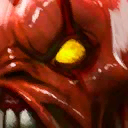 Rage
Rage or Bladefury which give you magical immunity...but do you need more?
In summary, you should ALWAYS consider picking a
 Black King Bar
Black King Bar! The only times it may genuinely not be appropriate are the few times the enemy is lacking almost all magical abilities and/or you/your team has an even bigger need for something else.
Going with the Flow
There's two things I want to cover in this section - the importance of reading the game, and the opposing forces of efficiency and flexibility.
I'm going to use carry  Gyrocopter as an example, and work through all the potential scenarios and how they should be approached.
Gyrocopter as an example, and work through all the potential scenarios and how they should be approached.
First of all,  Gyrocopter is naturally quite a flexible carry choice - he can choose between strong early nuking power, and the ability to farm quickly with
Gyrocopter is naturally quite a flexible carry choice - he can choose between strong early nuking power, and the ability to farm quickly with  Flak Cannon. However, he lacks decent health and mana pools early on.
Flak Cannon. However, he lacks decent health and mana pools early on.
This leaves you with two main choices:
- Grab early items to "fix" your pools, like  Drum of Endurance and increase your ability to fight and survive. Possibly snowball, but decrease your AFK farming speed. Concentrate your skill points in
Drum of Endurance and increase your ability to fight and survive. Possibly snowball, but decrease your AFK farming speed. Concentrate your skill points in 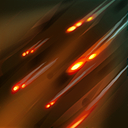 Rocket Barrage and
Rocket Barrage and 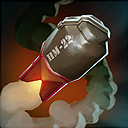 Homing Missile.
Homing Missile.
- Grab an early  Helm of the Dominator, allowing you to stack up jungle and ancient camps, and then farm them efficiently with lots of points in
Helm of the Dominator, allowing you to stack up jungle and ancient camps, and then farm them efficiently with lots of points in  Flak Cannon. Less survivability, faster farming speed.
Flak Cannon. Less survivability, faster farming speed.
Your choice here will be influenced strongly by the line up of both teams, although these things aren't always clear cut. For example, if you had an extremely aggressive lineup you could join them with an aggressive item build and look to snowball. Alternatively, you could let them create space for you to farm in. Neither of these decisions is necessarily right or wrong, a lot depends on how well the plan is executed.
You might even start one way, and then change as the game progresses. Maybe you start very aggressively, but switch to a more farming style later on when you've taken the enemy T1 towers and it's harder to make successful pick offs. Maybe you start off farming hard, but have to switch to a more aggressive stance when the opposition start trying to push down your T2 towers.
This is where you earn your corn as a core player - reading the game, and then responding with appropriate item and skilling choices. Say you're in the jungle, but keep getting ganked - you'll maybe need to switch up and fight with your team, buying items that'll help you right now, instead of paying off later, and choosing fighting over farming skills. In the same vein, you don't build a  Butterfly when your opponent has already completed a
Butterfly when your opponent has already completed a  Monkey King Bar.
Monkey King Bar.
Game knowledge is your other friend here - you're in a team against  Death Prophet,
Death Prophet,  Shadow Shaman and
Shadow Shaman and  Chen...those AFK farming items are not wanted here, that team is going to be pushing hard from fairly early on and are not going to give you time to sit in the jungle.
Chen...those AFK farming items are not wanted here, that team is going to be pushing hard from fairly early on and are not going to give you time to sit in the jungle.
Efficiency Vs Flexibility
Our other area of debate and contention. Again, there are no right answers here, it's simply about making and executing the right decisions for the situation.
The best way I can explain this is to start with Efficiency. Lets continue with our  Gyrocopter example. Say we were playing in a 1 player practice game, you are the only hero on the map. Your goal is to get to 10000 gold net worth as quickly as possible.
Gyrocopter example. Say we were playing in a 1 player practice game, you are the only hero on the map. Your goal is to get to 10000 gold net worth as quickly as possible.
I haven't done the maths for this (sorry Xyrus ;{)), but here's some rough thoughts - you'd probably start with a  Blades of Attack and nothing else. Get your
Blades of Attack and nothing else. Get your  Phase Boots as quickly as possible (pretty efficient for damage scaling) and then into
Phase Boots as quickly as possible (pretty efficient for damage scaling) and then into  Helm of the Dominator, while levelling
Helm of the Dominator, while levelling  Flak Cannon and a mix of stats and
Flak Cannon and a mix of stats and  Rocket Barrage. Move between the lane and the jungle, while stacking ancients and farming them, adding more damage as much as you can.
Rocket Barrage. Move between the lane and the jungle, while stacking ancients and farming them, adding more damage as much as you can.
This is an example of a very efficient build - it has absolutely minimal "flab" - everything that doesn't help you farm faster is stripped away. You will hit your target as fast as possible.
Now, try to translate this build into a real game. Suddenly, opposition heroes will be actively trying to hinder and kill you. Going into lane with no  Tangos and only
Tangos and only  Blades of Attack is looking very ropey. You may need to get involved in fights, avoid areas of the jungle from time to time, and buy extra items that will help you survive. After all, you can't do much farming when you're dead.
Blades of Attack is looking very ropey. You may need to get involved in fights, avoid areas of the jungle from time to time, and buy extra items that will help you survive. After all, you can't do much farming when you're dead.
A more balanced approach may be required to achieve a faster result in a real game - in fact a real game also opens opportunities for you to pick up kills that help you progress faster, and you have allies to stack for you and take towers.
To summarise:
Sleek, efficient builds -> High Risk, High Reward
Balanced, conservative builds -> Low Risk

Example
The key here is to make an educated guess about the likelihood of success. For example I was playing
 Disruptor
Disruptor as the sole support on a pub team in a previous patch. I bought both the
 Animal Courier
Animal Courier and
 Observer Ward
Observer Wards (300 gold at the time), gave one of my
 Tango
Tango's to mid and grab a few cheap
 Clarity
Clarity potions and an
 Iron Branch
Iron Branch. The enemy team had picked a
 Bristleback
Bristleback so I was already somewhat concerned about regen.
A
 Magic Stick
Magic Stick was high on my wishlist, but supports don't always get what they want.
To my horror, I found the
 Meepo
Meepo I was laning with had just got a pair of
 Boots of Speed
Boots of Speed...nothing else...against a
 Bristleback
Bristleback, who then had a
 Rubick
Rubick for company. I gave him two of my
 Tango
Tango's and had to use the other myself. He ended up hiding in the trees behind the tower while I scraped together some gold for more regen, and then he died before it arrived. He ended up feeding 3 more deaths as the
 Bristleback
Bristleback got stronger and stronger on the back of them. Obviously, it was all my fault as the support.
So, the moral of this story? 1 pack of
 Tango
Tangos isn't enough to supply 3 heroes. Well duh. This is a perfect example of "counter-productive efficiency" -
 Meepo
Meepo didn't want to buy
 Tango
Tangos so he could buy other stuff faster. As it turns out, this decision was extremely costly for him.
Summary
While this guide hasn't focused very much on specifics and is subject to my own prejudices and opinions, I hope that it's given you lots of food for thought.
Some players can be extremely inflexible about what they build and fail to adapt to the situation in hand. While there are many fundamentally "bad" (read: inefficient on that hero) builds, there is no such as a perfect build either.
For example, many people like copying the greedy jungle stacking playstyles of pro players on their mid heroes - for example  Storm Spirit,
Storm Spirit,  Shadow Fiend or
Shadow Fiend or  Lina.
Lina.
These are fundamentally very powerful ways of playing - otherwise the pro's wouldn't use them. However, you can't simply use them in every game. Those super-efficient pro style builds are draft, ally and enemy dependent.
Some allies will suffer horribly if you take all their stacks or drain the map of gold. Some builds are dependent on your supports stacking or ganking for you, and this simply might not be possible if they're fully engaged having to babysit a hard carry or fight an aggressive trilane...never mind if there's only a single support or an AFK jungler on your team.
This is of course assuming you're playing at a level where the supports are active and know to do these things.
Good builds are all about having enough game knowledge and foresight to be able to figure out what's going to work, whether you can get the farm for it, and what style of play you should be using.
If you've got a hard carry, you should generally be looking to buy them space by going for a midgame focused build. The last thing your team needs here is 3v5 team fights while two of you bicker over who gets to farm the jungle. If you're struggling to farm due to a tough lane, maybe you're going to have to change away from that  Radiance you wanted.
Radiance you wanted.
Likewise, you need to look at what the enemy team is packing. If you're a right clicking core playing against a  Phantom Assassin and a
Phantom Assassin and a  Windranger the first thought that pops into your mind should be "
Windranger the first thought that pops into your mind should be " Monkey King Bar" - even if it's not your first item, it should still be a high priority.
Monkey King Bar" - even if it's not your first item, it should still be a high priority.
Basically, use your brain. Don't allow yourself to fall into repeat patterns of builds without at least thinking a little about whether you need to change them for this particular match. Try to see the big pictures of not just what your hero needs, but what the team needs, and what will best counter the opposition.


















 Examples
Examples



















Quick Comment (12) View Comments
You need to log in before commenting.